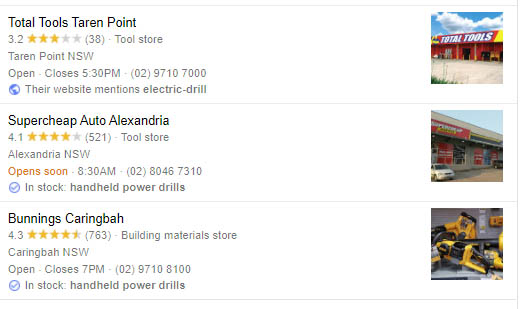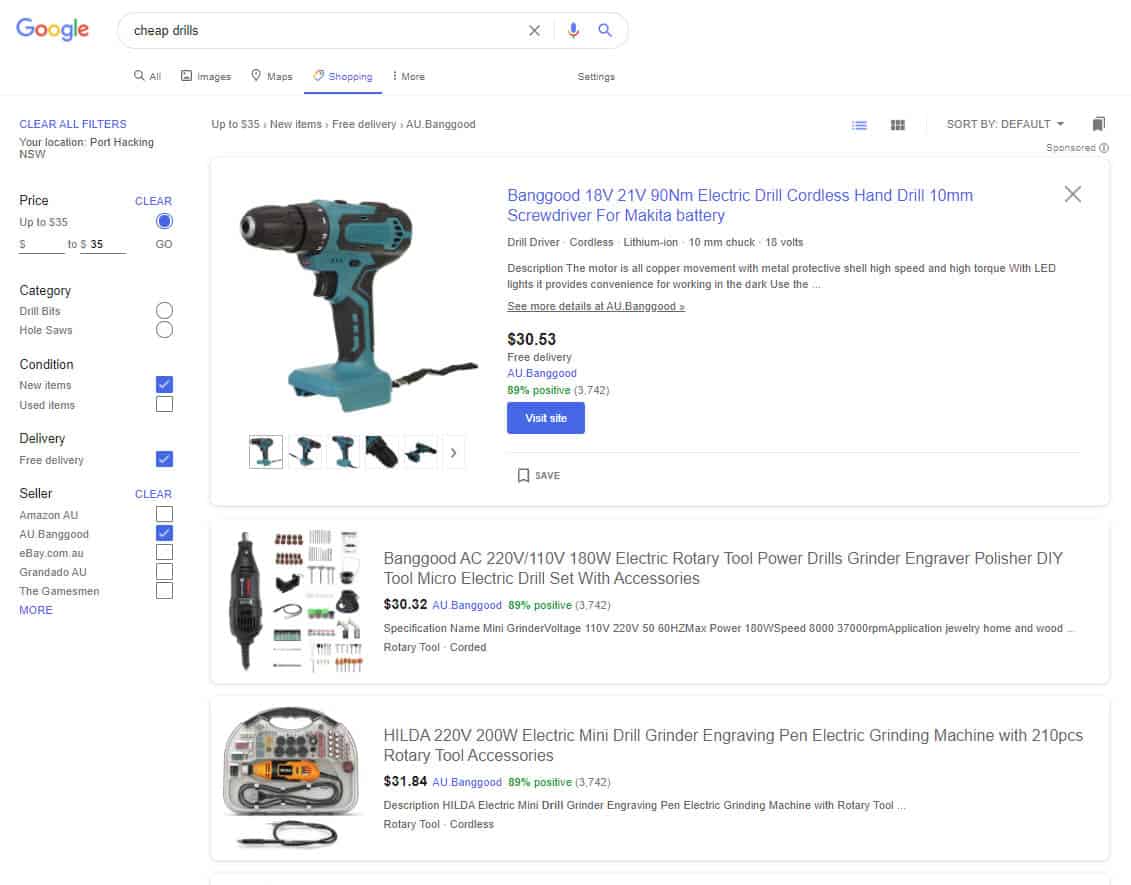What is Online Business Engineering?
Online Business Engineering is the application of professional business tools, experience and knowledge to achieve planned business outcomes in the online space - Keith Rowley MBA (Bond) BSc (Hons) Electronic Engineering (UCLan)
It Doesn't Matter What Your Business Is
Whether you are running a corner shop pizza operation, or large electronic systems, or drop-shipping goods from China to the USA, or you have a hairdresser's boutique or a medical practise - Online Business Engineering is for you. I'll go as far as to say that if you are in business at all in 2020 - you need online business engineering without exception. To see why, we begin with a list of problems that businesses confront every day online:
The Problems Business Faces Online
Doubtless, some of you will have problems I have not listed here, but I'm pretty sure that whatever they are, they're related to one or more of the issues above.
Taking a Top-Down View of Online Business Engineering
Treat Your Online Presence as a Profit Center
Many of the above problems arise from business owners and managers not running their online presence as a business. They (you) would not run their offline business with its fixed and variable costs without setting revenue, cost and margin calculations; they wouldn't allow it to lose money.
'Ah' I hear you say, 'but my online presence is not a separate business'. I know but - your online presence needs to be treated as a profit center. Of course, I am not addressing businesses that only exist online with this advice - you guys understand that fact perfectly well.
However, even those businesses that only exist online fall prey to many of the problems above due to lack of goals and planning. So let's start looking at solutions, using our knowledge of Online Business Engineering. These methods apply to all businesses that obtain all or some of their sales or leads or both online.
Set Your Online Business Goals
Let's make some SMART Goals [ SPECIFIC MEASURABLE ACHIEVABLE RELEVANT TIME-BOUND] for an online business. You will have a set of these smart goals, but we'll work with just two for this exercise. For this purpose, assume you are selling household electronics. You have a local store, and you also want to sell nationally. You do not have a highly recognized brand but your street store has been running for several years.
These goals are obviously SPECIFIC, MEASURABLE, TIME-BOUND and RELEVANT. What is not obvious is - are they achievable? And that's where your business assessment begins.
Are Your Online Business Goals Achievable?
You will note that we still haven't talked about building websites, or Facebook advertising or anything else so far - we have simply started setting out what we want to achieve online. We're pretty sure that the goals we have specified above meet four of the five SMART goal criteria. The outstanding one is ACHIEVABLE. So what's next?
Your Product and Price
Let's assume that the product we are focusing on is a Power Drill - a competitive sales item. You know you have a price advantage over better known brands and you are convinced that when people see it online they will buy it.
Consideration 1: Online Purchase Behavior
Online selling has some very, very different aspects to street-store selling. We can't give the whole account here but we will tell you this about your product and how it's purchased in contrast to many other online items:
Google Search Results for 'Cheap Electric Drill'
Note: When doing these Google searches, Google knew my exact location which results in local business getting priority in the listings.

The first results we see here are the products sold on 'Google Shopping' - a part of the Google advertising environment. Google Shopping is a Google service that allows consumers to search for, compare, and shop for physical products across different retailers who have paid to advertise their products.
Next, we see 'normal' Google text ad and then the top-ranked organic results. Finally we see the 'Google Three Pack' lower down the page:

Here are some key observations that will affect your Online Business Engineering efforts:
- 1For commodity products selling on price, Google Shopping is far and away the most visible result
- 2Because of the Google Shopping result, a normal text ad seems pretty well useless - it's just absorbed into the organic listings
- 3The organic listings are dominated by large companies that will be difficult to beat
- 4The Three Pack is not dominated by cheap drills - it is dominated by hardware stores - Google is VERY Intelligent
- 5The Three Pack is NOT dominated by large companies - it is dominated by LOCAL companies
So at this point in our example exercise we have:
1. Set our goals
2. Selected our promotion product
3. Had a look at the competition and results on Google
What are our preliminary conclusions? These are mine - others might differ:
These are important results and conclusions if you want to turn a profit online. Of course, this is just one simple example, but it does illustrate the basic method of product and business promotion on Google.
Consideration 2: the Costs and Methods of Being Found Online
Now that we know what our options are, we are in a position to calculate costs and return on any investment we make in SEO and/or advertising. Here goes:
- 1Option1: Get a professional business website and join Google Shopping.
- 2Option 2: Advertise and sell your products on Facebook or other social channel (Not recommended for this product - remember what I said about 'impulse buying' ). Although a website is highly recommended, you don't always have to have one.
- 3Option 3: Advertise the product on Google in the normal way
- 4Option 4: SEO: Optimize your website to rank as local hardware store and get some reviews and local citations going
- 5Option 5: Sell on Amazon
Consideration 3: The the costs of starting your Online Business Engineering?
Now we have some options for the way forward, but we don't have a cost. This is the point at which you have goals, a budget, some research results and a bucket of tools at your disposal - choose wisely!
Option 1: Getting a Website and Joining Google Shopping
Every website is different. The estimates below are a ballpark figure and do not include hosting costs, logo design etc.
Your Business Website
Business Type | Website Type | Price Range | Note |
|---|---|---|---|
eCommerce Store | Multi page, payment options, multiple store options | $2500 Upwards - typically $8000 for an established business | Subject to Options and product numbers. Global SEO Structure |
Restaurant and Cafes | One page and up with menu options etc. | $1000 Upwards | Subject to options |
Small service companies - tradies, hairdressers etc | One page and up | $1000 upwards | Subject to options |
Architects, Builders, Larger Services Suppliers | Five pages and up | $2000 and up | Subject to options |
Hotels, rental lease companies | Five pages and up - advanced payment facilities, booking etc | $4500 and up | Subject to options |
ALWAYS ALWAYS ALWAYS HAVE A BUSINESS WEBSITE SPECIFICATION BEFORE YOU GET A QUOTATION. Also, before beginning, make sure you have your content available - photos, text etc. It will cost you a lot more to have these commissioned.
A business website specification will give your developer exact requirements to quote on, which means he/she cannot come back later and charge more because 'you didn't ask for that'. A competent developer can help you to write your specification document.
So - You have your business website sorted, now it's time to join Google Shopping and sell that drill!

What you see above is a product page on Google shopping. See how wonderful this is for buyers - they can select suppliers, price ranges and so on. This page exists in addition to the results on the organic results page (above). Before you can decide to use Google shopping, you need more facts and figures.
Getting Onto Google Shopping
This is not a push and click one step operation. I am going to assume now that you have set up a fast, beautiful website with competitive pricing (for this product), and superb product images, This is what's next:
- 1Set up a Google Merchant Center account
- 2Collect and input your product feed data
- 3Set up and link a Google AdWords account
- 4Create a Google Shopping campaign
- 5Place bids on your Shopping campaign
If that sounds complicated - don't worry. Again, you are not alone. Personally, I think that Google's brilliant engineers don't have clue when it comes to user interfaces that mere mortals can understand. Whether it's tracking data or ads - their user interfaces often suck! One exception is Google Business and another is Google Webmaster - they're pretty good these days.
I cannot put in all the detailed instructions here, but I do need you to know that when you pay an agency such as mine, you are paying for experience and knowledge - this is not easy. Unless you want to spend a large chunk of your time on setting up and managing ads, product feeds and so on you do need an agency to do this for you. Approximate costs:
"Anywhere between $250 to $5,000+ per month. However, you should keep in mind what you're getting for your investment. Typically, with a hands-on, strategic PPC agency, your ad spent budget will be close to the amount you will spend on management fees with your agency. When you see numbers like $250 per month, it's likely too good to be true, because there is very little an agency can do strategically for you to maximize your ad spend in that time." - "IMPACT"
But that still leaves you with the cost of your actual Ad budget for "Cheap Electric Drills". So what do ads cost on Google? For your product it's this:

What this is telling you is that for 'cheap electric drills' advert on Google, the average cost of a click is $2.13.
So let's say your budget is $64 per day (not per month) - you will get 30 clicks from people who see your advert. You've got them to the product page on your website - great! But will they buy from you? This is where we hit our next goal - website conversion!
Website Conversion
Across industries, the average landing page conversion rate was 2.35%, yet the top 25% are converting at 5.31% or higher. Ideally, you want to break into the top 10% — these are the landing pages with conversion rates of 11.45% or higher - Wordstream
You should rework these numbers for various keywords and indeed products. I have found that for my services, the typical Cost Per Click (CPC) is over $10, but the products are typically $1000 and up in price so it can make sense.
Option 2: Advertise and sell your products on Facebook or other social channels
For this, you can either use your website or simply load your products up to a Facebook shop for free. The cost is in the advertising. Facebook charges CPM - or $/ thousands of views. That means that you pay an amount for your ad to be shown 1000 times. if you are wondering where the 'M' comes from, it's from the Italian for thousand - 'mille'. I have no idea why this happened!
CPM costs vary a lot according to the audience (more later). I typically work with CPMs of $50 down to $2. A CPM can start high - usually does - but then drops if the viewer reaction to the ad is good.
So what does it cost? We have found that you need to start off your tests on at least $/day. If the product sells and gives you a return, then you can increase your daily budget in small increments of around 10% every two days.
Facebook is a fantastic advertising platform, but it is complicated though not as bad as some Google products in that respect. You need to know your way around. I find that the most difficult part is defining audiences.
Facebook Advertising Variables
There are only two KEY variables to worry about on Facebook Advertising. Everything else is fine tuning.
On Facebook, despite the superb design of the advertising platform, it can be very hard to ascertain the reason when things don't work - good product, wrong audience, or bad product, good audience - trial and error is the only way to find out.
For instance, let's say you are selling something that people might buy on impulse - say a piece of Christian jewelry like the one below (we've sold a lot of these) in the US:
So we've chosen our product - now who do we think will buy it? Here are the questions you must answer for a product of this type - it's a key part of every exercise in online business engineering - who are you selling to?
This is not as as easy as it sounds. It took us hundreds of dollars in ads and changing audiences for what we knew was an attractive, unusual and well priced product. We would never advertise something like the drill on Facebook, because it's just too simple to find it at the hardware store down the road or a host of other places.
Option 3: Advertise on Google in the Normal Way (Without Google Shopping)
We've covered aspect of online business engineering most of this in the section on Google Shopping above. You need a Google Ads account, a location within which you want the ads seen and a budget.
You need to understand that Google is a 'Pay per Click' or CPC platform (CPC determines your daily ad expenditure).You also need a professionally optimized website to get acceptable conversions to sales. Your numbers could look like this:
On these numbers, you would clearly be losing $18.50 on every sale - which is pretty poor online business engineering. You should go through your numbers thoroughly before launching an ad and make sure that you are on solid ground. In the above case, see how this can be modified:
On these numbers you are now making $10 - $5.64 = $4.36 per sale or 12.5%.
The objective of the above cost and revenue scenarios is to show you how to start your online business engineering exercise - I make no claim that for specific products those numbers hold true.
Option 4: SEO Your Website and Rank as a Local Hardware Store
SEO is a major part of our work here at Sydney Business Web and a cornerstone of Online Business Engineering. We've got quite a bit of content about SEO here on our website, so we've point the way with the link at the start of this sentence and we'll summarize very briefly here:
What is SEO and why so we need it in Onine Business Engineering??
SEO is simply a set of methods to make your website prominent and profitable on the web. SEO is always needed when you are not advertising and is a key source of driving buyers to your business website. With good SEO, you can reduce your advertising costs enormously. There are several types, but they can and often should be combined:
SEO Costs
Local SEO
How fast you rank in SEO depends on two key factors: The lowest cost SEO is for local ranking in google's 3 pack. The main key is onsite SEO - getting all of the metadata and other signals in line with what you want to rank for. Once that is achieved, regular posts and a smattering of good quality links and citations each month will often get you there depending on how competitive your niche is of course. This should cost you no more than around $1000/month. Lower budgets are possible but I do not advice them.
National SEO and eCommerce
Again, depending on the results you require and the speed at which you require them, I don't recommend programs below around $2,200/month including external link building, Guest posts on high-powered website and regular blog posting. One of the commonly misunderstood aspects of this SEO, with crossover into the others, is that Expert Content can help a lot. This form of SEO involves posting lengthy articles (like this one) that demonstrate your expertise and which can rank in Google with very little or no effort - Google loves good content. Thus, a quality article on electronic weighing can bring huge benefits to a specialist measurement supplier such as Weigh-More in Sydney.
You should thoroughly analyse your competition, do thorough analysis of your current web presence and most of all (and I cannot emphasize this enough), HIRE AN AGENCY THAT YOU CAN TRUST.
International SEO and eCommerce
This is much the same as National SEO, but with specialist sections set up on your business website for the appropriate countries. In many instances, you can rank internationally for products with no further effort than normal national SEO, because all of the main players are just e-competitors with no local presence or traditional stores. We do not recommend entering this race on less than around $4,400 per month.
Economic Returns on SEO
It is absolutely critical to measure your returns on SEO, but this cannot be done over one month. SEO takes at least three months to show the first significant effects, but once the positions you want for your products and services on Google are achieved, they can persist for months and if you continue your SEO campaigns, indefinitely. Naturally it is also possible that at any time, your position can be reduced by a competitor who simply spends more than you or more cleverly than you on SEO.
But the returns can be substantial and will include a reduction in your advertising costs as more and more traffic comes to your business website from SEO. Part of your Online Business Engineering exercise is to balance your SEO spend with your advertising spend, always making sure that your business website is profitable, each and every month.
Option 5: Selling Products on Amazon
We have personally spent tens of thousands of dollars selling on Amazon, so once again, we have personal experience. For the type of audience we generally have here - small and medium business owners, I'm going to recommend - don't do it unless you have a LOT of time to run it properly. So now I need to explain such a deeply controversial statement.
The Complexity of Selling on Amazon and Amazon FBA
Selling on Amazon is quite complicated, We imported branded products from China to the USA into the Amazon warehouses. We paid the importer, we paid the Amazon fees and we paid out for any customer complaints. But we also used FBA - Fulfilled by Amazon which means that once the product is in the warehouse, Amazon takes it from there. This is a typical profit per item report:

This actually looks good BUT there are several factors not included.
What they Don't Tell You About Selling on Amazon
I am appalled by the current situation of Facebook where self-styled 'gurus' are selling 'it's easy to make money on Amazon' books. I suspect most of them have zero serious experience. Anyway, here's what to watch out for:
- 1The Amazon fees shown above at around 21% of your price (I love FBA but just be aware of the costs)
- 2Import and/or freight costs getting the product to Amazon
- 3Monthly Amazon pro seller fee (around $40)
- 4Budget for a % of returns from customers - Amazon always favors the customer. Some of these are refunded to you.
- 5Amazon Advertising Costs - this can eat up your profit completely. Just getting your product in front of the customer needs Amazon ads. As with Google and FB ads, how much you spend depends on how much you want to sell. This will be a significant cost per item.
- 6Price Pressure - see below
Price Pressure on Amazon Sellers
Amazon is an intensely competitive environment for sellers. Many sellers use software to monitor competitors and automatically undercut them in the competition for the 'Amazon Buy Box'. This can drive you out of profitability in no time flat and when we were selling on Amazon - no one had told us about it. We had a beautiful, branded product, but the brand was not widely known, so we got caught up in the downward price spiral. The only way to avoid this is to have a unique product and no competition - and almost no one does. For us, this was the SINGLE BIGGEST PROBLEM SELLING ON AMAZON.
Summary of Online Business Engineering
We have covered much ground in this article, but there is no way we could cover everything our experience has taught us - the article is already too long. But here is the summary:
Conclusions
Given the complexity of online selling and devising an online business engineering plan, our advice is simple - GET A PARTNER YOU CAN TRUST. Otherwise, you will spend more time managing your online tools than you spend running your business. Good luck and God Bless.

Keith Rowley MBA BSc Hons General Manager of Sydney Business Web
About the Author of Online Business Engineering
Welcome to our article on Online Business Engineering
Before we embark on our introduction to Online Business Engineering, I thought I'd introduce myself. I started my career as a Merchant Navy Radio and Electronics Officer, but before that, I cleaned cowsheds, worked hotel kitchens and served at tables. I still have friends going back to my school days and I am a strong believer in honesty, hard work and loyalty.
After my navy career, I went to university and studied engineering after which I went to South Africa and worked in the mining and electronics industries, spending many years in design.
Then I 'went to the dark side', and did an (Australian) MBA with Bond university, which launched me on my management career. After 21 years in South Africa, I moved to Australia ten years ago. I have managed technology companies in both countries and sold products and services nationally and internationally. Happily married for some 30 years to my wife, an award winning artist who I'm always so proud of, I am an Australian citizen living in Sydney Australia. That's me folks - that's who I am. Now onward!
Where We Started
Every business starts somewhere! We started out as RowleySEO to provide traffic generation services and websites to Australian business. Over time, we found that we were not using our core skills in business, marketing and engineering. So when we started Sydney Business Web, we always intended to migrate from purely websites and SEO into a top-line, elite, online business consultancy. But you have to start somewhere, so we set up in Sydney and opened our offering with eCommerce Websites, Rental Websites, Logo design and a host of related services on social media. Now, having established our business base, we are providing much deeper solutions to online business problems - and websites, SEO and the varied panoply of services we provide are simply tools - tools to lift the top and bottom lines of your business.




